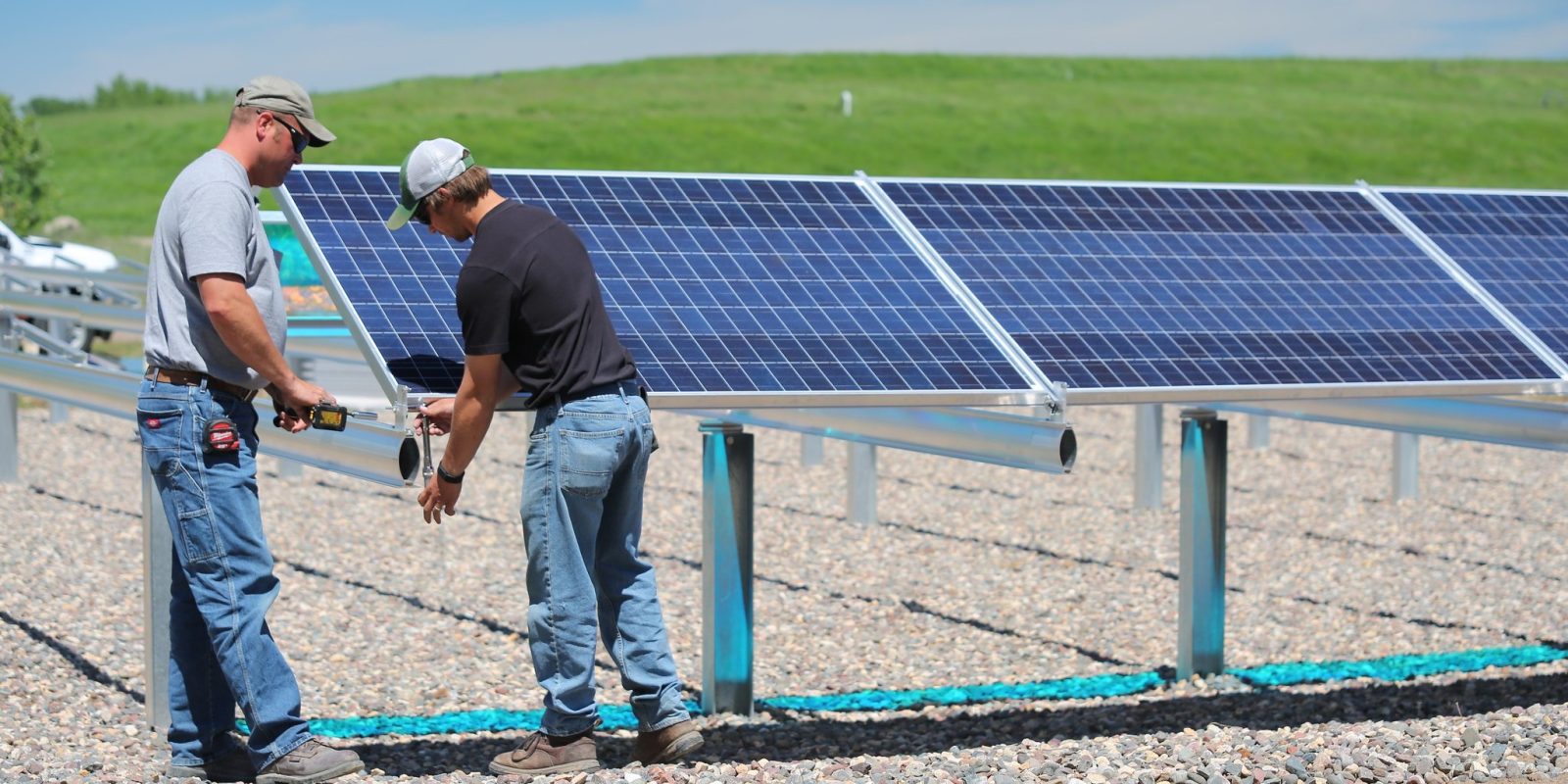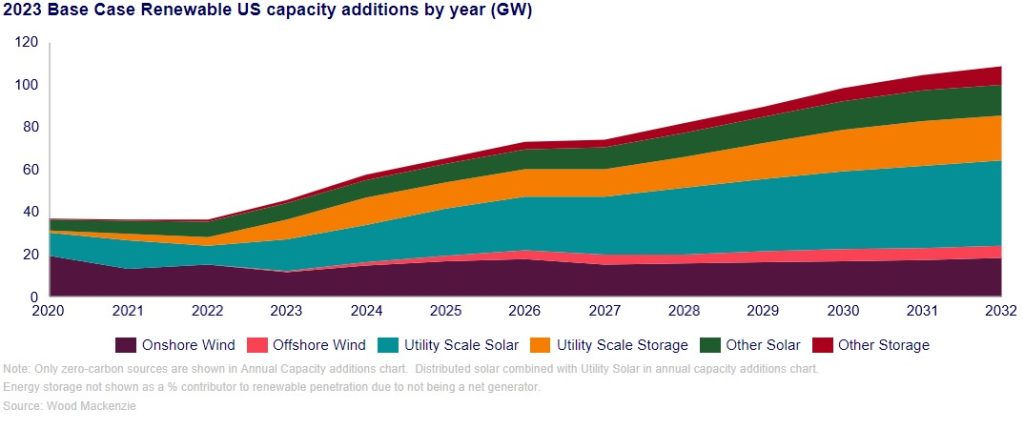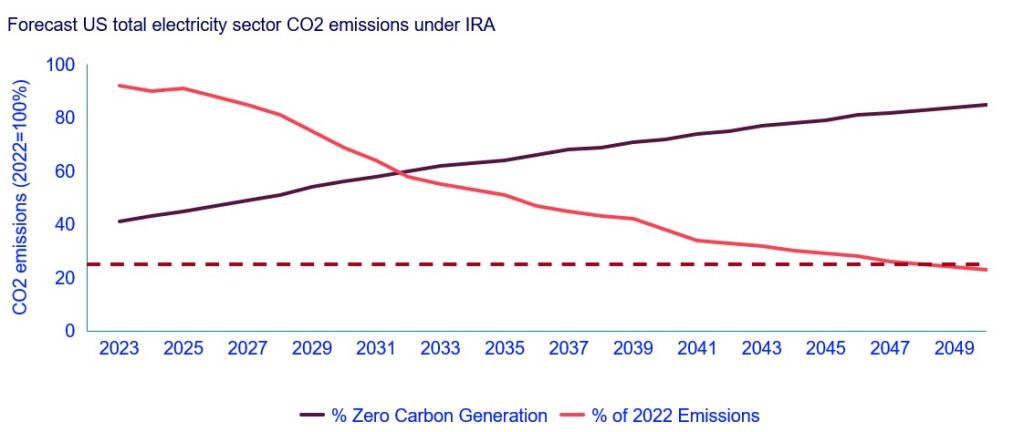
With the US Inflation Reduction Act (IRA) driving the economic competitiveness of renewables, annual capacity additions will nearly triple in 10 years to 110 gigawatts (GW), asserts Wood Mackenzie (WoodMac).
US renewables’ annual capacity growth
Speaking at the RE+ conference in Las Vegas, Chris Seiple, vice chairman, power and renewables for Wood Mackenzie, said:
The IRA has made renewables very competitive with other technologies and wholesale power prices. As a result, we are seeing a land rush for development sites and a resurgence in US manufacturing to support the renewables industry.
There are still challenges that remain, but overall, low-cost renewables present a major opportunity for investment, and we project annual capacity additions in 10 years to nearly triple what they are now.

According to Wood Mackenzie, the total costs for IRA tax credits through 2050 are estimated to be $1.9 trillion. This will provide the economic base for growth, but it won’t assure an entirely smooth transition, added Seiple. He continued:
The complexity of turning the IRA into detailed rules has made the initial investment difficult and slowed down development, but the long-term projection is strong.
Ultimately, economics won’t be the main challenge for future growth, but rather issues like interconnection queues, transmission capacity, and labor shortages could cause bottlenecks.
Some advanced grid technologies, such as direct line ratings (DLR), have the potential to provide near-term transmission solutions and expand grid capacity. Some studies suggest DLRs can outperform static ratings 90-95% of the time and achieve capacity increases of more than 30%.

Seiple said:
There are solutions available now that can help alleviate current issues, but they are not getting traction fast enough.
Apart from these problems, we also face increasing extreme weather events, which have added strain on grids across the globe. As we work through these challenges, we project that the IRA will significantly reduce carbon emissions and result in a 60% carbon-free power sector by 2032, which is progress, but not enough to put us on track to limit the extent of climate change sufficiently.
Electrek’s Take
I chose to cover the comments Seiple made at RE+ because he’s right. In fact, just today I wrote about the challenge of getting all those renewables queued up and online.
The Biden administration has set an ambitious goal of achieving an emissions-free power sector by 2035. If we don’t make addressing the grid and the labor issues the highest priority, and use innovative solutions that can be rapidly deployed, then WoodMac will be right – we’ll miss the 2035 net zero goal. And the US simply cannot afford to do that.
Read more: Heat pumps are more efficient than oil and gas heating in subzero temps – Oxford study
Photo: “Solar Installation at Washington County Landfill (Closed)” by MN Pollution Control Agency is licensed under CC BY-NC 2.0.; Graphs: Wood Mackenzie
If you’re considering going solar, it’s always a good idea to get quotes from a few installers. To make sure you find a trusted, reliable solar installer near you that offers competitive pricing, check out EnergySage, a free service that makes it easy for you to go solar. It has hundreds of pre-vetted solar installers competing for your business, ensuring you get high-quality solutions and save 20-30% compared to going it alone. Plus, it’s free to use, and you won’t get sales calls until you select an installer and share your phone number with them.
Your personalized solar quotes are easy to compare online, and you’ll get access to unbiased Energy Advisors to help you every step of the way. Get started here. –ad*
FTC: We use income earning auto affiliate links. More.



Comments